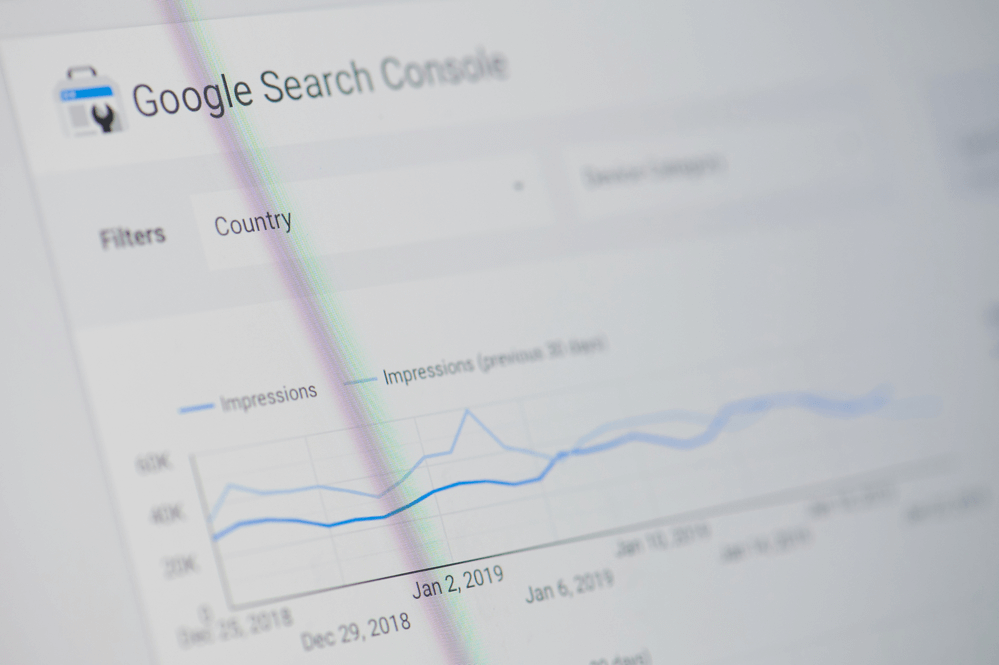 Want to know how your website shows up on Google? Checking your Google ranking is essential if you want more people to find your site. In this easy guide, we’ll show you how to find out where your website stands in Google’s search results.
Want to know how your website shows up on Google? Checking your Google ranking is essential if you want more people to find your site. In this easy guide, we’ll show you how to find out where your website stands in Google’s search results.
With clear, step-by-step instructions, you’ll learn how to check your ranking and discover ways to attract more visitors to your site. Whether you’re just starting out or looking to improve your current strategies, this guide is here to help.
Are you ready to boost your visibility? Let Texas Web Design lead the way!
Get in touch with us today to learn more.
Understanding Google Ranking
In search engines, Google’s ranking system is a critical metric for gauging a website’s visibility and success. This section breaks down the essential concepts behind search engine rankings and the impact of Google’s ranking on a site’s online presence.
Basics of Search Engine Rankings
Search engine rankings refer to the position at which a website appears on the search engine results page (SERP) in response to a user’s query. A variety of factors determine these rankings, including but not limited to:
- Relevance: The content of a web page should match the user’s search intent.
- Authority: Sites with high-quality inbound links from other reputable websites are often seen as more authoritative.
- User Experience: Factors like page load speed, mobile-friendliness, and easy navigation contribute to overall user satisfaction.
Websites aim to appear as high as possible on SERPs, ideally on the first page, since users tend to click on the top results.
The Significance of Ranking on Google
Google, as the leading search engine, can significantly influence a website’s traffic and exposure. High rankings on Google can translate to:
- Increased Visibility: Websites on the first page of Google are more likely to be visited by users.
- Credibility: Users often perceive top-ranked websites as more trustworthy and credible.
- Traffic: A higher ranking increases the probability of organic traffic, which is often targeted and has a better conversion potential.
Every website must strive to understand and optimize for Google’s ranking factors in order to maximize its potential for attracting visitors.
Why Monitoring Your Google Rankings Matters
Understanding your website’s position in search results is crucial because it directly impacts your site’s visibility. Studies show that the first organic result in Google Search can achieve a click-through rate of up to 28.5%. This means being at the top can significantly boost your website traffic.
Benefits of High Rankings
- Increased Visibility: Moving from the third page to the first in search results greatly enhances the chances of your audience discovering your website.
- Targeted Traffic: By focusing on high-performing keywords, you can tailor your content strategy to attract visitors who are more likely to be interested in your offerings.
Stay Ahead with Continuous Improvement
Monitoring your rankings allows you to measure the success of your SEO efforts over time. This ongoing evaluation helps you refine your strategies, ensuring they evolve alongside search engine algorithm updates.
Adapting to Change
Search engines frequently update their algorithms, which can affect your website’s ranking. Regularly checking your rankings will help you adapt quickly to these changes, maintaining or improving your position in search results.
Tools for Accurate Ranking Checks
To get precise insights into your website’s performance, using specialized tools is essential. These tools provide detailed data that can guide your SEO decisions effectively.
By integrating these insights into your approach, you’ll be better equipped to enhance your site’s search engine performance and reach more potential visitors.
Checking Your Google Ranking Manually
When attempting to determine a website’s position on Google search results without the aid of specialized tools, individuals should use certain manual methods. These approaches require meticulous search and analysis of the outcomes.
Using Google Search

It is imperative to:
- Use an Incognito or private browsing mode to prevent personal search history from influencing the results.
- Enter the desired keyword or phrase into the search bar and observe the first few pages of Google’s search results.
Note: Since results can be localized, it may be beneficial to specify a non-personalized location if the objective is to understand ranking in a different geographical area.
Analyzing Search Results
After conducting the search, the individual should browse through the search results pages to locate the website in question. Key actions include:
- Counting the position where the website appears, the first result on the first page is position 1, the second result is position 2, and so forth.
- Taking note of the page number on which the website first appears provides insight into the website’s visibility.
Table: Example of recording observed rankings for keyword “example keyword”.
| Keyword | Position | Page Number | URL |
| Example keyword | 15 | 2 | www.example.com |
By performing these steps regularly and consistently, one can monitor potential fluctuations in Google search rankings over time. This ongoing vigilance is crucial not only for tracking changes but also for adapting to algorithm shifts that can impact your website’s visibility.
Regular monitoring enables you to stay ahead of Google’s frequent algorithm updates, ensuring that your strategies remain effective and up-to-date. This proactive approach allows you to swiftly identify and capitalize on opportunities for improvement, enhancing your site’s performance and maintaining a competitive edge in search results.
By keeping a close eye on your rankings, you can pinpoint areas where your website might be underperforming and make necessary adjustments to optimize your SEO efforts. Overall, this consistent evaluation and adjustment process is key to sustaining and improving your online presence.
Utilizing SEO Tools for Ranking
To effectively monitor and enhance a website’s Google ranking, one must employ a combination of reliable SEO tools. These tools offer insights into performance metrics and competitive analysis, which are crucial for SEO strategy.
Google Search Console
Google Search Console (GSC) is an essential tool provided by Google that assists website owners in monitoring their site’s presence on the search engine. GSC enables them to track their website’s ranking performance with precision.
By verifying their site, users gain access to important data such as search queries, the number of times the site appears in search results (impressions), click-through rates, and the website’s average position in search rankings.
Key uses of Google Search Console:
- Understanding search queries leading to the site
- Viewing impressions, clicks, and the average position
- Identifying crawling and indexing issues
- Submitting sitemaps for better indexation
Third-Party SEO Tools
Third-party SEO tools can complement the Google Search Console by offering additional features and data points.
Such tools typically provide comprehensive keyword rank tracking, backlink analysis, and competitive insights. Some popular third-party SEO tools include Ahrefs and Moz, which come equipped with a suite of features to aid in tracking and improving Google rankings.
Examples of insights from third-party SEO tools:
- Rank tracking: Discover precise keyword rankings across different locations.
- Backlink analysis: Explore and evaluate backlink profiles.
- Competitive analysis: Assess competitors’ SEO strategies and rankings.
By integrating information from both Google Search Console and various third-party SEO tools, one can gather a holistic view of their SEO efforts and fine-tune their strategies for better ranking on Google.
Improving Your Google Ranking

SEO Best Practices
- Keyword Research: Identify precise and relevant keywords with tools like Google’s Keyword Planner. Aim for a mix of short-tail and long-tail keywords that align with the searcher’s intent.
- Mobile Optimization: Ensure the website is fully responsive on mobile devices, as mobile-friendliness is a significant ranking factor.
- Page Load Speed: Improve server response time and optimize image sizes to enhance page load speed, reducing the bounce rate.
- Secure Website (HTTPS): Transition to HTTPS, as secure websites are favored in rankings over non-secure ones.
- Backlinks: Cultivate high-quality backlinks from reputable sites. The number and quality of backlinks remain a prominent indicator of a site’s authority.
Content Optimization
- High-Quality Content: Create content that is informative, engaging, and of high quality, addressing the specific needs and questions of the target audience.
- Keyword Use: Employ the targeted keywords naturally in titles, headings, meta descriptions, and throughout the content.
- Content Structure: Use headings (H1, H2, H3 tags) to structure the content clearly, making it easier for search engines to understand and index.
- Internal Linking: Implement a strategy for internal linking to guide users and search engine crawlers through the website’s architecture.
Monitoring Your Ranking Over Time
Accurate measurement of Google ranking over time is important for assessing the effectiveness of SEO strategies and making informed adjustments.
Tracking Changes and Adjustments
When monitoring a website’s Google ranking, one should track changes methodically. By doing so, they can correlate ranking fluctuations with specific actions taken, such as content updates or changes in SEO tactics.
Tools like Ahrefs and Google Search Console provide detailed reports on how rankings evolve over time for individual keywords. Users can compile this data into tables to identify trends and patterns:
| Keyword | Rank (Week 1) | Rank (Week 2) | Rank (Week 3) | Notes |
| Example Keyword | 15 | 12 | 9 | Updated content on page |
| Another Keyword | 30 | 28 | 31 | Increased backlinks |
Final Thoughts
Understanding and improving your website’s Google ranking is essential for boosting its visibility and attracting more visitors. By following the steps outlined in this guide, you can manually check your ranking and use tools like Google Search Console and third-party SEO tools to gain deeper insights into your website’s performance.
Remember, consistent effort in SEO practices such as keyword optimization, improving page speed, and ensuring mobile-friendliness is key to climbing higher in search results. For those looking to further enhance their online presence, partnering with a professional can make a significant difference.
Are you ready to see your website reach the top of Google’s search results? Contact Texas Web Design today to find out how we can help you achieve your digital goals!
Frequently Asked Questions
-
How do I find my website’s position in Google search results?
To discover a website’s position in Google search results, one can utilize the free keyword rank checker tool from Ahrefs or directly access Google Search Console for comprehensive data on average position.
-
What tools can I use to monitor my website’s performance in Google rankings?
Website administrators can employ tools such as Ahrefs, Backlinko’s Keyword Rank Checker, and SEMrush for detailed keyword tracking. The Google Search Console also provides extensive performance metrics.
-
Can I determine the rank of my website on Google without any cost?
Yes, individuals can determine their website’s rank on Google for free using the Google Search Console or free versions of third-party tools.
-
What is the best way to track multiple keywords rankings on Google?
The best method for tracking multiple keywords is to use a rank tracking tool like SEMrush or Ahrefs, which can monitor numerous keywords and offer updates on their performance over time.
-
How frequently should I check my rankings on Google for accurate tracking?
It is recommended to check important keyword rankings at least once a month for consistent and accurate tracking of a website’s performance in Google search results.
-
Is it possible to achieve the top position on Google, and how can I do it?
Achieving the top position on Google is feasible with a well-optimized website, quality content that matches search intent, and an effective SEO strategy. Utilizing rank tracking tools to monitor progress and areas for improvement is essential for climbing the search rankings.

